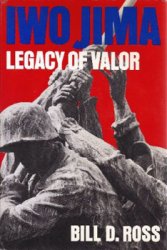Most Mexican specialists who track drug-related security challenges are far from sanguine about conditions improving, at least in the short term. They point to the growing strength, proliferation, and fragmentation of the country's myriad drug traffickers, making them much harder to contain, along with the insufficient resources and instruments at the disposal of the Mexican government to deal effectively with the problem.
Michael Shifter, 200729
In the 1950s and 1960s, opium poppies were cultivated in the north-central states of Sinaloa, Durango, and Chihuahua. During this period, Mexico supplied 10—15 percent of the heroin consumed in the United States and as much as 75 percent of the imported marijuana. Drugs were usually grown on small farms and then spirited into the United States by members of well-established smuggling families, some of which got their start running alcohol across the border during Prohibition. Such trafficking involved the bribing of local and regional officials, but did not lead to significant violence.30
The modern era of drug trafficking between Mexico and the United States began on September 21, 1969, as the U. S. government launched Operation Intercept to pressure the Mexican government into taking a more active role in halting drug trafficking. Some 2,000 U. S. customs officials began to thoroughly search all cars crossing into the United States from Mexico. Quite predictably enormous traffic jams ensued, and local economies on both sides of the border suffered. The chief architect of this operation was G. Gordon Liddy, later of Watergate fame. Operation Intercept responded to the huge increase in marijuana imports from Mexico and indicated Nixon’s desire to project a “tough-on-crime” image. Customs chief Myles Ambrose called the operation “shock treatment” for the Mexican government, stating that afterward “the Mexican ministers promised everything.” The bi-national negotiations were secret and it will never be known what “everything” Was.
Through the 1960s, Turkey was the principal source of heroin consumed in the United States. However, after the Turkish government, under intense U. S. pressure, banned opium production and implemented a strict control program in 1972, production shifted to a logical and much closer alternative—Mexico. By 1975, an estimated 80 percent of the heroin consumed in the United States came from Mexico.32
Mexico responded to U. S. pressure to combat drug trafficking with Operation Condor, one of the most ambitious drug eradication efforts ever undertaken by any country. During 1975 and 1976, Mexico spent $35 million to deploy 5,000 soldiers and 350 police to eradicate drugs in the states of Sinaloa, Durango, and Chihuahua. Troops in the field manually eradicated drug plants, and aircraft sprayed herbicides on fields. The results were dramatic—Mexico’s share of marijuana exports to the United States fell from 75 percent in 1976 to as low as 4 percent in 1981. Similarly, Mexico’s share of heroin exports to the U. S. fell to 25 percent. Strikingly, even though hundreds of peasants were detained, tortured, and jailed, not a single major trafficker was arrested.33
In the late 1970s and early 1980s, cocaine was flown from Colombia to the Bahamas or to any of various Caribbean islands and then on to the United States. To close this smuggling route, U. S. surveillance planes blanketed the Caribbean. However, rather than abandoning the U. S. market, Colombian traffickers diverted their cocaine flights to Mexico and from there across the U. S. border. Increased scrutiny of cross-border flights soon led traffickers to fly cocaine to clandestine airstrips south of the border. Then the drugs would be spirited across some isolated border region or hidden in one of the hundreds of thousands of vehicles that cross the border daily. Mexico’s emergence as a transshipment point for northbound cocaine can easily be quantified. In 1982—1983, only 300 kilograms of cocaine were seized in Mexico. By 1991, this figure had risen to more than fifty tons.34
U. S. actions to combat drug trafficking increased during the 1980s. During Reagan’s tenure (1981—1989), Washington consistently demonstrated its preference for preventing drugs from reaching the U. S. consumer over, as historian Oscar Martinez expressed it, “seriously facing up to the voracious consumption of drugs in U. S. society and coming up with effective means to reduce demand.” In the late 1980s, to interdict drug smuggling, National Guardsmen and U. S. army troops were stationed along the border. At least thirty U. S. DEA agents were stationed in Mexico to support the campaign. 35
In response to increased enforcement efforts, marijuana growers retreated into inaccessible regions of the Sierra Madre Occidental and moved many of their operations to the city of Guadalajara. Increased interdictions forced traffickers into entrepreneurial organizations that were fewer in number, financially stronger, and more dangerous to society and government. Traffickers increasingly bribed and employed violence to protect themselves. At a 1987 U. S. Senate sub - committee hearing, U. S. Customs Commissioner William Von Raab stated: “The good news is that we are catching more drugs because we are getting better at doing our jobs. We have more resources. The bad news is that we are catching more because more is coming across.”36
During the early 1990s, drug culture permeated border society. Narrative ballads known as corridas glorified the drug traffickers, who became celebrities not unlike rock stars. One of the best known celebrity traffickers was Amado Carrillo Fuentes, who flew cocaine into Mexico in privately owned Boeing 727s, a tactic that earned him the nickname “the Lord of the Skies.” Country club doors opened to traffickers so long as they paid their dues and hosted lavish weddings for their sons and daughters. These trafficking celebrities never missed an opportunity to exhibit their flashy jewelry, customized pickups, flamboyant clothes, and bodacious babes.37
During Salinas’s term (1988—1994) more than 102,000 were jailed for trafficking, and drug seizure and plant eradication reached record levels. Prisons were filled with small-time traffickers and those subject to dubious arrests, thus earning praise from U. S. officials as a sign of getting tough on drugs. Despite the arrests, at the end of the Salinas administration, 20 percent of heroin, 60 percent of marijuana, and 60 percent of cocaine that the United States imported crossed the border from Mexico. At that time, traffickers were estimated to bring in more dollars than oil or tourism.38
Increased enforcement did little to stem the flow of drugs from Mexico. In 2000, an estimated 20—30 percent of heroin, 50—60 percent of cocaine, and up to 80 percent of marijuana imported by the United States came from Mexico. NAFTA greatly facilitated drug trafficking as smugglers simply inserted drugs into legal cargo loaded onto commercial trucks. They relied on the inability of customs to thoroughly inspect each shipment. Traffickers also used shipping containers and individuals known as “mules” who would walk across the border carrying drugs.39
Despite the training and receipt of equipment, illegal drugs continued to flow across the border. At the end of the Fox administration in 2006, an estimated 70 to 90 percent of the drugs illegally imported into the United States came from Mexico. That year the level of trafficking was indicated by a single DC-9 that was busted in Campeche with 5.6 tons of cocaine aboard. Its cargo was to have been part of the estimated 300 tons of cocaine that annually arrives in the United States from Mexico. A 2007 raid in the upscale Lomas de Chapultepec neighborhood in Mexico City indicated the financial power of the traffickers. Police searched a drug safe-house there and found 205 million U. S. dollars in cash, thought to be the product of smuggling amphetamines into the United States.40
In order to keep the drugs flowing north, traffickers altered their modus operandi. The most significant change was a relentless increase in violence as enforcement fragmented long-established distribution systems and more young bucks attempted to enter the business. The end of PRI rule shattered the cozy relationship that had existed between politicians and traffickers. The rapid increase in domestic drug consumption also led to increased violence as traffickers fought to control neighborhoods where they sold drugs. Drug-related murders increased to more than 5,000 in 2008. Violence was directed at members of rival cartels, government officials whose efforts at drug enforcement were seen as an obstacle to trafficking, and journalists who brought unwelcome attention. Traffickers turned to increasingly lethal arms including machine guns, bazookas, and hand grenades.41
At the same time that they were unleashing lethal force against fellow traffickers, dealers ceased flaunting their lifestyle and began to behave more like low-profile businessmen, since they realized that their behavior attracted unwelcome attention. Flamboyance was replaced by cell phones, faxes, pagers, and the internet, using the latest encryption technology to keep their messages secret.42
There are few issues on which there is greater consensus than that the drug war has been a failure. As Mexican analyst Jorge Chabat noted in 2005:
The good news is that there are more capos in jail; the bad news is that it doesn’t change anything.
There’s no change in the amount of drugs available on the street, and you have more violence.
The logical question is, “What are we doing this for?”43
The financial cost of this failure is enormous. The United States spends $50 billion annually in its attempt to control narcotics, not including the cost of arresting half a million drug offenders and incarcerating them. In Mexico, supporting soldiers and narcotics agents deprives other projects of funding. The courts are full of drug cases, limiting what can be accomplished in other areas of domestic law. Increased funding to combat drug trafficking strengthens the one state institution that least needs strengthening—the military.44
Another cost of the failed drug war is corruption linked to drug trafficking. In 2009, by one estimate drug traffickers provided employment to 450,000 Mexicans. Estimates of Mexican traffickers’ receipts ranged between $10 and $24 billion. A notebook recovered from Juan Garcia Abrego at the time of his arrest included a list of payoffs, ranging from $1 million to the commander of the Federal Judicial Police down to $100,000 paid to the federal police commander in the border city of Matamoros. Such payments purchase an essential service monopolized by government officials—the non-enforcement of the law. Those in charge of enforcement must be bribed because they cannot be entirely bullied or bypassed.45
The efforts to combat drug trafficking have had a pernicious effect throughout Mexican society. Special anti-drug military units have track records of abuse of power and human rights violations.46 False accusations of drug trafficking are used to taint rivals, just as false charges to the colonial Inquisition were used.
One of the few points of agreement is that rural development offers a long-term solution to drug trafficking by providing producers with legal income sources. However, as it is, neither the state nor the private sector can offer poor rural residents alternatives that match opportunities offered by traffickers. Whole regions depend on the production of illegal drugs. A 1993 study found that the state of Sinaloa’s economy was growing at twice the national rate as a result of drug production. An economist at the University of Sinaloa commented, “You’ll notice that despite the economic downturn, there is still a great deal of new construction going in Culiacan [the state capital].” At the individual level, a farmer earns as much money growing one kilogram of marijuana as he earns producing a ton of corn.47




 World History
World History









